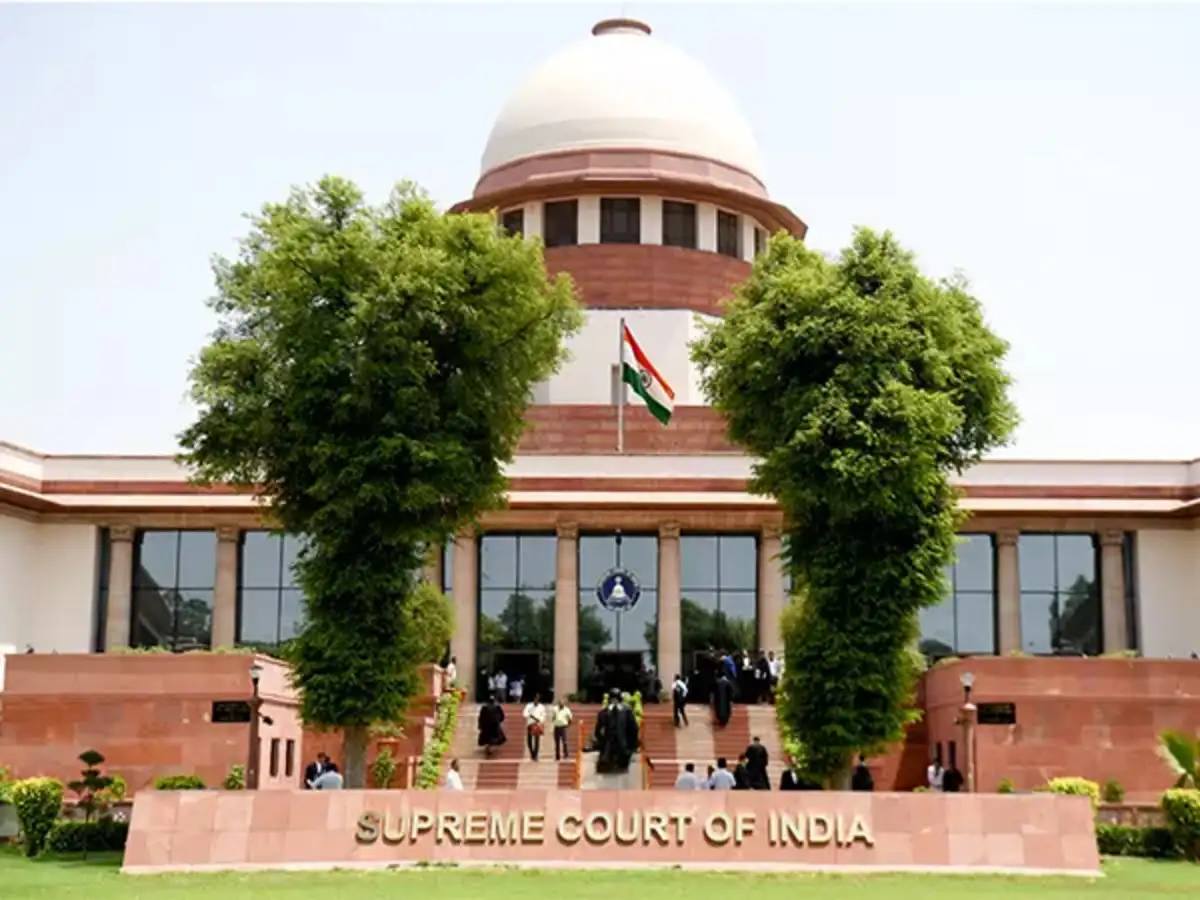- Courses
- GS Full Course 1 Year
- GS Full Course 2 Year
- GS Full Course 3 Year
- GS Full Course Till Selection
- MEP (Mains Enrichment Programme) Data, Facts
- Essay Target – 150+ Marks
- Online Program
- GS Recorded Course
- NCERT- First Ladder
- Polity
- Geography
- Economy
- Ancient, Medieval and Art & Culture AMAC
- Modern India, Post Independence & World History
- Environment
- Governance
- Science & Technology
- International Relations and Internal Security
- Disaster Management
- Ethics
- Current Affairs
- Indian Society and Social Issue
- CSAT
- 5 LAYERED ARJUNA Mentorship
- Public Administration Optional
- ABOUT US
- OUR TOPPERS
- TEST SERIES
- FREE STUDY MATERIAL
- VIDEOS
- CONTACT US
No contempt if Parliament, legislatures simply make laws: Supreme Court
No contempt if Parliament, legislatures simply make laws: Supreme Court

Introduction
The recent Supreme Court verdict in the Nandini Sundar contempt plea has offered insights on two cornerstone doctrines of the Indian Constitution — Contempt of Court and Separation of Powers.
The case revolved around the Chhattisgarh government’s legislative response to a 2011 Supreme Court directive in the context of the Salwa Judum movement and the use of Special Police Officers (SPOs) in anti-Maoist operations.
The Court’s ruling not only clarifies the legal limits of what constitutes contempt but also reinforces the delicate constitutional balance among the Legislature, Judiciary, and Executive.
Background of the Case
- In 2011, the Supreme Court had directed the State of Chhattisgarh to disband and cease support to Salwa Judum, a state-sponsored vigilante group that used tribal youth as SPOs to combat Maoists. The Court viewed the practice as unconstitutional and violative of human rights.
- However, in September 2011, the State Legislature enacted the Chhattisgarh Auxiliary Armed Police Force Act, which effectively regularized and rebranded SPOs as members of an auxiliary force.
- Petitioners Nandini Sundar, Ramachandra Guha, and E.A.S. Sharma filed a contempt petition in 2012, alleging that the legislation was a deliberate evasion of the Supreme Court's judgment and therefore amounted to contempt.
Supreme Court Ruling: Legislation Cannot Be Contempt
A Bench of Justices B.V. Nagarathna and Satish Chandra Sharma disposed of the contempt petition, ruling that the act of passing a law, even if subsequent to a judicial order, does not amount to contempt of court.
Key Judicial Observations:
- Legislative Power Cannot Be a Contempt by Default:
Simply enacting a law that appears contrary to a court order is not ipso facto contempt. A legislature acts within its plenary powers unless its action is struck down on grounds of constitutional invalidity. - Judicial Review vs Judicial Supremacy:
The judiciary’s role is to interpret and review laws—not to inhibit the legislature from performing its constitutional functions. - Validity Through Constitutional Process:
If a new law appears to nullify a judicial ruling, the appropriate remedy is a constitutional challenge under Article 32 or 226, not a contempt petition under Articles 129 or 215. - Presumption of Constitutionality:
Every enacted law enjoys a presumption of constitutionality until proved otherwise. This principle ensures legislative sovereignty within constitutional boundaries.
Significance of Supreme Court Verdict
1] Contempt of Court: Scope and Limits Clarified
- Definition:
- Contempt of Court refers to any act that disrespects the authority, dignity, or functioning of the judiciary or obstructs the administration of justice.
- It aims to protect the independence of the judiciary, maintain public confidence in the legal system and prevent disruption of justice delivery
- Constitutional Provisions:
- Article 129: Empowers the Supreme Court to punish for contempt.
- Article 215: Grants similar power to High Courts.
- Types of Contempt: (Contempt of Courts Act, 1971)
- Civil Contempt: Willful disobedience of court orders.
- Criminal Contempt: Acts that scandalize the court, lower its authority, interfere with judicial proceedings or obstruct the administration of justice.
- What This Verdict Clarifies:
- The mere act of law-making is not contempt, unless deliberately obstructive, defiant, and in clear violation of a specific judicial directive.
- Contempt proceedings cannot be used to challenge substantive legislation.
2] Separation of Powers: Doctrine Reaffirmed
- Separation of Powers is a governance model that divides the state into three branches — Legislature, Executive, and Judiciary — each with separate and independent powers and areas of responsibility to prevent any one branch from exercising the core functions of another.
- It aims to ensure a system of checks and balances so that power is not concentrated in any one organ, thereby protecting individual liberty and constitutional governance.
- Unlike the rigid separation in the U.S. Constitution, the Indian Constitution adopts a functional separation, not an absolute one.
- The Doctrine of Separation of Powers, though not explicitly stated in the Constitution, is part of its basic structure (Kesavananda Bharati case, 1973).
- It mandates that:
- Legislature: Enacts laws and Includes Parliament (at the Centre) and State Legislatures.
- Executive: Implements laws and policies. It Includes the President, Prime Minister, Council of Ministers, and the administrative machinery.
- Judiciary: Interprets laws, protects fundamental rights, and ensures justice. It is Independent of both legislature and executive.
- Application in This Court Case:
- The Legislature exercised its sovereign function by enacting a new law.
- The Judiciary’s domain lies in assessing the constitutionality of that law—not declaring it contempt.
- The Executive is responsible for implementing court orders unless superseded by valid legislation.
3] Reinforces Checks and Balances in a Constitutional Democracy
This verdict reinforces the concept of checks and balances, wherein each organ of the State acts as a check on the others without overreach or encroachment.
Implications:
- Protects legislative autonomy from judicial interference.
- Ensures that judicial review does not morph into judicial governance.
- Encourages lawful challenge through constitutional routes rather than adversarial contempt proceedings.
4] Broader Constitutional Significance
- Limits Judicial Overreach: Prevents courts from assuming quasi-legislative roles under the guise of contempt.
- Affirms Rule of Law: Reiterates that all disputes over law must be resolved through constitutional mechanisms, not executive interpretations.
- Facilitates Cooperative Federalism: Allows States to legislate based on local needs, while remaining subject to constitutional scrutiny.
Conclusion
Both Separation of Powers and Contempt of Court are essential to India’s constitutional democracy.
- Separation of Powers ensures that the three organs of government function independently yet interdependently, avoiding overreach and fostering accountability.
- Contempt of Court protects the judicial institution from undue interference but must be used judiciously to avoid infringing on fundamental freedoms.
The Nandini Sundar/Salwa Judum case is a textbook example of the judiciary respecting the legislature’s domain while maintaining its power of judicial review, showcasing constitutional maturity and balance. It is a landmark clarification of the boundaries of contempt law and the autonomy of the legislature within the Indian constitutional framework.
|
Also Read |
|
| NCERT Books For UPSC | |
| UPSC Monthly Magazine | Best IAS Coaching in Delhi |




